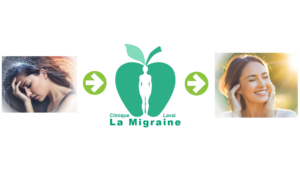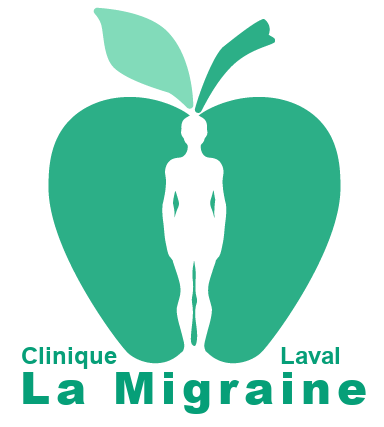We understand your concern: Help your child overcome their migraines.
Migraines in children are much more than just a headache. Intense pain, nausea, fatigue, sensitivity to light or sound… These symptoms can disrupt their daily life, affect their learning, and limit their participation in activities they enjoy. We understand how difficult this can be for parents to witness.
At the Clinic La Migraine, we have over twenty years of experience in treating migraines, including those affecting children. We understand the specific needs of younger patients and the impact these migraines have on their development and well-being. We are here to offer tailored solutions and help your child regain a fulfilling, pain-free life.
>Tangible Solutions, Proven Results
-
Reduction of over 70% in the intensity, frequency, or duration of episodes in the greater majority of our patients.
-
Personalized approaches tailored to your history and lifestyle.
-
Over 20 years of proven expertise in treating chronic, hormonal, vestibular migraines, and more.
>A team that understands and supports you.
- Attentive listening to your unique situation and needs.
- Treatment plans tailored to your progress, continuously reviewed for optimal effectiveness.
- Compassionate care with Dr. Daniel Lachance, chiropractor, to help you take control of your life again.
>Don’t let migraines affect your child’s life anymore.
They deserve to regain serenity and freedom. Contact us today to schedule an appointment and discover how our methods can alleviate their migraines… or even make them disappear.
Contact us now or call 450-689-1223.
Life is too short to spend it in pain. Don’t wait any longer: you have the right to live fully.
Navigating through migraines in children
Synonyms: pediatric migraine; juvenile migraine
Frequency in children
Migraines within kids are a lot more common than we may think. While migraines are often associated with adults, they can also affect children—a phenomenon that is sometimes underdiagnosed and undertreated. Nearly 60% of the global population of children and adolescents experience significant headaches, and 7.7%-9.1% suffer from migraines.1 Additionally, 3% of children and adolescents worldwide have migraines with aura, which is about one-third of the young people affected by migraines.2
Head disorders are classified as the second leading cause of years lived with disability worldwide. Headaches are the most common type of pain among children and young people, affecting health-related quality of life, school attendance, and social interactions. According to the Global Burden of Disease Study in 2016, migraine was ranked as the most disabling disease among the age group of 15 to 49 years. Though often underestimated, these headaches can start as early as childhood. The prevalence increases with age, and by adolescence, the rates approach those seen in adults.3
Although often underestimated, these headaches can start as early as childhood. The prevalence increases with age, and by adolescence, the rates approach those seen in adults. Some manifestations can even appear in early childhood. Generally, the peak age for experiencing migraines is in early to mid-adolescence. Clearly, young people who have migraines are often prone to experiencing them throughout their adult lives.1
Symptoms in children
Migraines in children present symptoms similar to those in adults, such as intense headaches, sensitivity to light and sound, nausea, vomiting, and in some cases, aura symptoms (visual disturbances or other sensory changes preceding or accompanying the headache). However, a major difference with adults is that children suffering from migraines often experience bilateral pain – the pain more commonly becomes unilateral as they approach adulthood. Moreover, the duration and frequency are reduced compared to those of adults.
Here are the criterias according to the ICHD-3 (International Classifications of Headache Disorders) :
-
Have a duration of 2-72h
-
• Present two of the following characteristics:
-
Unilateral or bilateral pain (for children)
-
o Throbbing sensation
-
o Moderate to severe pain intensity
-
Exacerbated by or leading to avoidance of usual physical activities (e.g., walking or climbing stairs).
-
-
• During the attack, exhibits 1 of the following characteristics:
-
o Nausea or vomiting
-
Photophobia ou phonophobia
-
-
• Experience at least 5 attacks meeting the above criteria.
-
• Have no better description for another diagnostic on ICHD-3 criteria
Living with migraines in children
Children suffering from migraines are at higher risk of experiencing academic performance difficulties and developing depression compared to others of similar ages.
Toddlers and school-aged children may experience episodes of paroxysmal vertigo, cyclic vomiting, and abdominal migraines. Benign paroxysmal vertigo (BPV) is characterized by sudden episodes of vertigo, nystagmus (involuntary eye movements), and vomiting, which can last from a few minutes to several hours and often resolve spontaneously. BPV manifests suddenly, with or without associated pallor or anxiety, typically occurring between 2 and 5 years of age. Treatment includes rest, reassurance, hydration, and differential diagnosis considers factors such as vestibular dysfunction post-ear infection.
The syndrome of cyclic vomiting (CVS) involves recurrent episodes of vomiting and nausea lasting 1 to 5 days, accompanied by pallor and lethargy. Symptoms completely resolve between attacks, typically beginning around the age of 5 years. The diagnosis of CVS must exclude any underlying gastrointestinal, metabolic, or mitochondrial disorders.
Abdominal migraine represents 4% to 15% of cases in pediatric gastroenterology, is more common in those with a family history of migraines, and rarely persists into adulthood. The pain, ranging from moderate to severe intensity, lasts from 2 to 72 hours if untreated. Headache is not a predominant feature; vasomotor symptoms such as nausea, vomiting, pallor, and anorexia are common. Up to 70% of children with abdominal migraine will develop more traditional migraines by the age of 9 to 10 years.1
Causes within children
Migraines in children can result from a combination of genetic, environmental, and neurological factors. Family history of migraines can make the child more susceptible. Although the exact cause remains unclear, disruptions in the vestibular system and its central connection signals, stemming from abnormal feedback from the neck or oculomotor system, appear to play a crucial role. Triggers such as stress, hormonal changes, certain foods, and sensory stimuli can contribute to triggering migraines in children.
Diagnosis of children
Diagnosing migraines in children can be challenging due to their sometimes difficulty in expressing symptoms. Parents and healthcare professionals play a crucial role in recognizing symptom patterns. Diagnosis often involves discussing medical history, observing symptom patterns, and ruling out other possible causes. It is essential to consult a doctor when experiencing new migraines to rule out any other possible conditions.
Again, feel free to call us for more information or to schedule an appointment for them. We welcome new young patients, and you do not need a medical referral.
Contact Form– We’re accepting new patients
We would be delighted to assist you and discuss your migraines. No referral is necessary. Simply fill out this form and submit it, and we will get in touch with you.
You are on the right path to your first consultation and relief from migraines!

